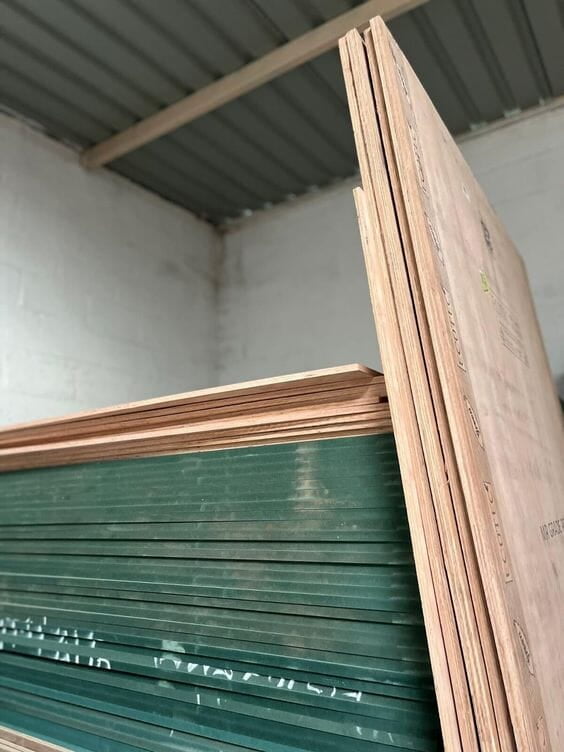Introduction
When embarking on a woodworking or construction project, selecting the right type of engineered wood is crucial for achieving the desired results. Medium-Density Fiberboard (MDF) and High-Density Moisture-Resistant (HDMR) are two popular choices, each with distinct characteristics suited to different applications. Understanding the differences between MDF and HDMR, along with their respective advantages and limitations, will help you make an informed decision for your project. In this blog, we’ll delve into the key considerations for choosing between MDF and HDMR.

Understanding MDF and HDMR
Medium-Density Fiberboard (MDF): MDF is an engineered wood product made from wood fibers, wax, and resin. The fibers are combined under high pressure and temperature to form a dense, smooth panel. MDF is known for its versatility, uniform surface, and ease of machining.
High-Density Moisture-Resistant (HDMR): HDMR is a variant of MDF specifically designed to offer improved resistance to moisture and humidity. It is manufactured with additional additives and a more dense structure to prevent swelling and deformation when exposed to damp conditions.
Key Factors to Consider
1. Project Requirements and Environment
a. Dry Environments
For projects in dry, climate-controlled environments such as interior furniture, cabinetry, and wall paneling, MDF is generally sufficient. Its smooth surface is ideal for painting and veneering, and it offers good dimensional stability.
b. Moisture-Prone Environments
In environments where moisture or humidity is a concern, such as kitchens, bathrooms, or basements, HDMR is the better choice. HDMR’s moisture resistance helps prevent swelling, warping, and deterioration, making it more suitable for applications exposed to varying moisture levels.
2. Durability and Strength
a. Load-Bearing Needs
MDF is relatively strong and durable for most applications but may not hold up well under heavy load-bearing conditions. For projects that require additional strength and resilience, such as heavy-duty shelving or structural elements, HDMR can provide enhanced performance due to its denser composition.
b. Surface Wear
If your project involves surfaces subject to frequent use or abrasion, such as high-traffic areas or furniture with heavy wear, HDMR’s added density and moisture resistance contribute to longer-lasting durability compared to standard MDF.
3. Finishing and Appearance
a. Smoothness and Machining
Both MDF and HDMR offer smooth surfaces that are easy to machine, paint, and finish. MDF is especially renowned for its uniform texture, which makes it an excellent choice for detailed carving and smooth finishes. HDMR, while still offering good machinability, may have slightly less smoothness compared to MDF.
b. Paint and Veneer
MDF is preferred for projects requiring a flawless paint finish or veneering because its surface is highly receptive to coatings and can be sanded to a smooth finish. HDMR can also be painted and veneered, but the additional moisture-resistant additives might slightly affect the adhesion of paint or veneer.
4. Cost Considerations
a. Budget
MDF is generally less expensive than HDMR, making it a cost-effective choice for projects where moisture resistance is not a primary concern. HDMR tends to be pricier due to its enhanced properties and manufacturing process. If your project requires the benefits of moisture resistance, it’s important to weigh the additional cost against the potential for longer-lasting performance.
b. Long-Term Investment
While HDMR may involve a higher initial cost, its durability and resistance to moisture can lead to cost savings over time by reducing the need for repairs or replacements. For projects in moisture-prone areas, the investment in HDMR can be worthwhile in the long run.
5. Environmental Considerations
a. Sustainability
Both MDF and HDMR are made from wood fibers and are considered environmentally friendly compared to solid wood. However, the environmental impact of manufacturing and disposal can vary. Check for certifications or eco-friendly practices associated with the product to make an environmentally conscious choice.
b. Formaldehyde Emissions
MDF and HDMR can emit formaldehyde, a common concern for indoor air quality. Opt for products that meet low formaldehyde emission standards, such as those certified by CARB2 (California Air Resources Board) or similar regulations, to ensure safer indoor air quality.
Applications of MDF and HDMR
1. MDF Applications
- Cabinetry and Furniture: Ideal for creating smooth, painted finishes and detailed carvings.
- Interior Paneling: Provides a clean, uniform surface for wall and ceiling panels.
- Decorative Moldings: Easily machined into intricate designs for moldings and trim.
2. HDMR Applications
- Kitchen and Bathroom Cabinets: Withstands moisture and humidity for long-lasting performance.
- Basement Finishes: Suitable for areas with higher moisture levels or potential water exposure.
- Outdoor Furniture (Covered Areas): Provides moisture resistance for furniture used in covered outdoor spaces.
Conclusion
Choosing between MDF and HDMR requires careful consideration of your project’s specific needs, environmental conditions, and budget. MDF offers a cost-effective solution with a smooth surface ideal for painting and detailed work, while HDMR provides enhanced moisture resistance and durability for areas prone to damp conditions.
By evaluating the factors discussed in this blog, you can make an informed decision that aligns with your project’s requirements and ensures optimal performance and longevity. Whether you’re building furniture, cabinetry, or paneling, selecting the right material will contribute to the success of your project and the satisfaction of your results.
For further guidance on choosing the right material for your project or to explore available options, consider consulting with a professional or visiting a specialized supplier. With the right information and resources, you can achieve outstanding results and create beautiful, functional spaces in your home.






